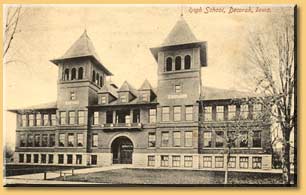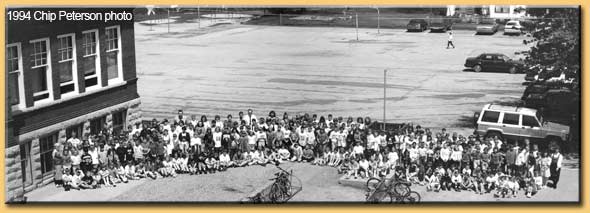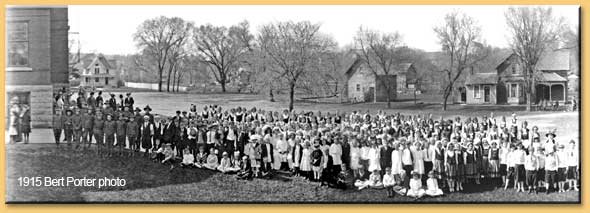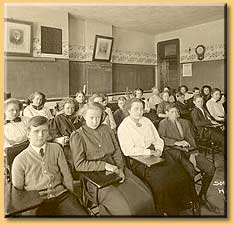
“Comfortable elegance” is how the Decorah news reporter described the feeling the new school building gave him as he toured it in January 1897. The school, East Side, was Decorah’s newest public building, and the largest building in central Decorah. It was about to begin its work as the educational home of Decorah’s children, from their first day of school to their graduation.

These leaders remembered the town’s beginnings, but also wanted to invest in its future. Voters agreed. They approved funding for “Decorah’s New Schoolhouse” by more than a 2 to 1 margin.

Local brick and stone from the old school were cleaned by Decorah children for re-use in the inner face of the solid rock foundation and the brick, load-bearing walls of “Decorah’s New Schoolhouse.” The exterior surface was finished with new materials and workmanship of the highest quality: Kasota limestone and hardened Menomonie brick, with tinted, thin butter joints in the mortar. Towers were added to give the building prominence and beauty. The interior was trimmed throughout in oak.
East Side was built out of need. In 1896, Decorah had outgrown its old school. The town was less than fifty years old and still growing. The board chair was a pioneer Quaker schoolteacher, and his board members included a Civil War colonel and an emigrant from England.

“Decorah’s new school building,” the news reporter concluded, “will become a show place to which citizens will take visiting friends and point with pride.”
From 1897 to 1922 the new schoolhouse served all children, K-12. In 1922 an addition to the school was opened as a high school and East Side handled the rest: grades k-8. From 1939 to 1999 it served various grades of Decorah’s younger students.
As early as 1953 the Decorah newspaper was calling for an end to the use of East Side, but the school stayed in use with only minor modifications and improvements. After building East Side, the school system continued to invest in new buildings: the Middle School, West Side, Thomas Roberts, and John Cline. East Side continued to serve until 1999, when it closed. It had served Decorah for 102 years.
As early as 1953 the Decorah newspaper was calling for an end to the use of East Side, but the school stayed in use with only minor modifications and improvements. After building East Side, the school system continued to invest in new buildings: the Middle School, West Side, Thomas Roberts, and John Cline. East Side continued to serve until 1999, when it closed. It had served Decorah for 102 years.






